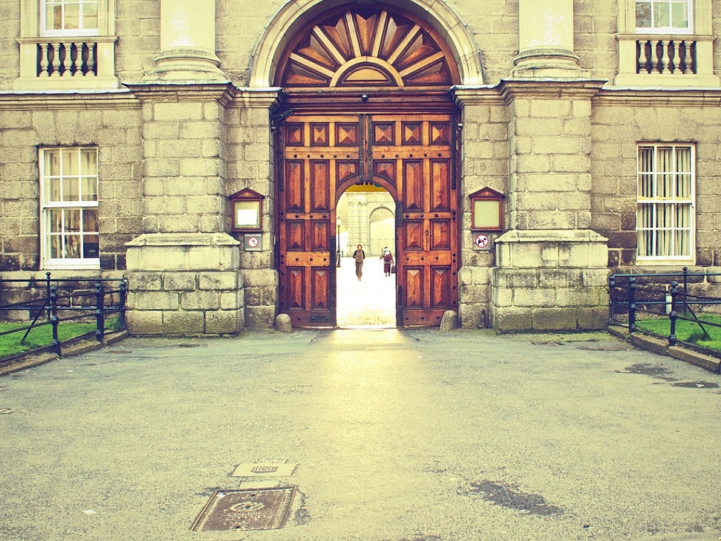
What's Next? Reflections on Pandemic-Era Campus Safety
Health, Safety, and Well-being Supporting the Profession Campus Safety and Violence Prevention
April 29, 2021
A strange thing happened during the pandemic.
Well, about a million strange things happened during the pandemic. In March 2020, COVID-19 halted campus operations, tied students of all ages to computer screens, and forced countless K-12 and college educators into perpetual crisis mode. The “lucky” institutions had an emergency management plan, though it undoubtedly could not have encompassed the sheer scope of COVID-19. Institutions and educators found themselves in day-to-day operations, knowing each new day would bring another unexpected element in the emergency response experience. While first responders and healthcare professionals quite literally saved the world, the rest of us learned to bake bread, sewed homemade masks, perfected Zoom backgrounds, and discovered the depths of Netflix documentaries.
In early March 2020, I was in London with a group of phenomenal students, savoring a once-in-a-lifetime study abroad experience as a friend of the program. As Director of Student Conduct and Community Standards, I tend to interact with students in their worst moments. I feel deeply honored to help students navigate these moments and watch them seek learning, resilience, and healing – and it is hard work. In London, I connected with my institution’s most talented, curious, creative, and kind students. We toured Oxford colleges, immersed ourselves in the newest West End production, and sampled global cuisine across the United Kingdom. Halfway through the trip, I found myself alone in a hotel room at midnight, managing nonstop phone calls, endless emails, a presidential address, and desperate attempts to book an emergency plane ticket. I landed in New York City less than 18 hours later as the city entered lockdown. Unable to book a flight back to campus for two days, I spent the next 48 hours developing remote operations plans and comically underestimating how long we would spend in pandemic mode, fueled only by adrenaline and hotel coffee.
So many student affairs and higher education professionals worked 24/7/365. Residence life staff cleared buildings mid-semester. Campus health providers staged field clinics and drive-through testing sites. Division leaders engaged in nonstop emergency operations. Thousands of other student affairs and higher education professionals shifted to entirely remote operations. Work from home life brought new challenges, but also the ability to wear more comfortable clothing, prepare healthier meals on a regular basis, and squeeze exercise sessions between meetings. And for a few of us, pandemic life introduced one more unexpected and desperately needed benefit.
For the first time in my life, I stopped worrying about mass shootings and school-based violence.
I have spent most of my educational history and the entirety of my professional career worried about the unexpected noise in the building or the person who demonstrated concerning behaviors. I always know my exit routes. Breaking news alerts of yet another mass shooting stop me in my tracks. I came of age in the time of Columbine, Jonesboro, Virginia Tech, and Northern Illinois. As a young student affairs professional, I lived through what I now describe as “near miss.” For 53 minutes one Friday morning, I sheltered in place during an active shooter incident, sending the messages one sends in final moments and desperately praying for rescue. The incident was later classified as a miscommunication, but the trauma was real. With every mass shooting, I relive the experience, grieve for victims and families, and fear the next report.
For one glorious year, I did not worry about any of these things. And I always knew it would end.
Gun violence increased during the pandemic, though in quiet but equally heartbreaking ways. Gun sales, domestic violence, and private incidents involving families or acquaintances swelled as the country endured lockdown (Chiwaya, 2021). While mass shooting incidents surged during the pandemic, shootings at K-12 schools and higher education institutions hit decade-low numbers (Everytown for Gun Safety, 2021). Breaking news of random, stranger-based executions in schools, grocery stores, shopping malls, and other public spaces nearly disappeared.
That is, until the country slowly began to reopen.
In March and April 2021, states dropped mask mandates, businesses returned to full capacity, and healthcare providers vaccinated eager individuals. And in a sadly predictable turn of events, public mass shootings returned in heartbreaking fashion. Eight people – mostly Asian Americans – were murdered in Atlanta spas. Ten people died in a Boulder grocery store. Eight more died at an Indianapolis FedEx facility. In the first four months of the year, there were 167 mass shootings involving four or more injuries and/or deaths and 12 mass murders involving four or more deaths (Gun Violence Archive, 2021). At that rate, 2021 will mark an all-time high in mass shootings and gun-based mass murder incidents.
The possibilities are overwhelming. As institutions emerge from pandemic operations, student affairs leaders must be prepared for an alarming surge in mental health issues, increases in threats, and the challenges that come when the population returns to full capacity. Our students, faculty, and staff may return having not fully grieved the pandemic impacts, engaged with care resources in routine ways, and connected socially in well over a year.
So how can campus leaders respond?
- Reconsider crisis preparedness, response, and recovery plans. Advocate for equal time spent planning recovery efforts – the most critical but typically overlooked elements in emergency management plans.
- Review threat assessment and behavior intervention practices. Train team members and campus partners in critical strategies. Use a well-developed rubric for every single case.
- Rehearse tabletop exercises for senior leadership and campus first responders. Consider ways to expand training for students and employees at all levels.
- Require bystander intervention training for all students, faculty, and staff. Familiarize the campus community with reporting requirements and expectations each year.
- Reflect on the role of trauma on campus. Create space for uncertainty, grief, and compassionate leadership.
- Reserve time for sustaining the work and protecting the experiences that nurtured us during the pandemic. Prioritize lessons learned about work/life balance.
In talking with students, friends, colleagues, and student affairs leaders across the country, one theme dominates recent conversations. People are running on empty and badly in need of a break. With excitement about vaccinations comes trepidation for post-pandemic life. As we look forward to connecting with friends, colleagues, and students in person, let us also serve as advocates for capturing the lessons learned in crisis and reframing the conversation. Let us focus on what’s next instead of striving to return to normal. Perhaps in doing so we can create campuses a bit safer, healthier, more equitable, and compassionate than before.
Katie L. Treadwell, Ed.D., serves as Director of Student Conduct and Community Standards at the University of Kansas and Chair of the Campus Safety and Violence Prevention Knowledge Community.
References
Chiwaya, N. (2021, April 26). Gun violence is up. It’s been up for more than a year. NBC News. https://www.nbcnews.com/news/us-news/compare-gun-violence-2021-n1265201
Everytown for Gun Safety (2021). Gunfire on school grounds in the United States. Everytown for Gun Safety. https://everytownresearch.org/maps/gunfire-on-school-grounds/
Gun Violence Archive (2021). Gun violence archive 2021. Gun Violence Archive. https://www.gunviolencearchive.org/
